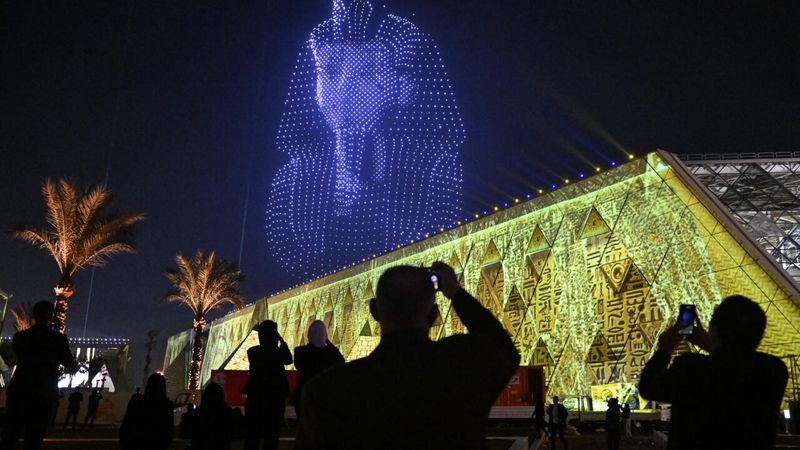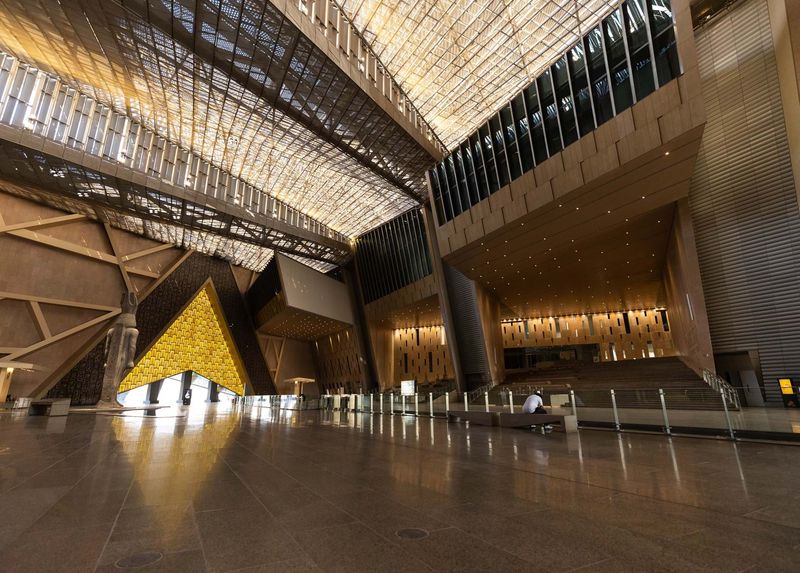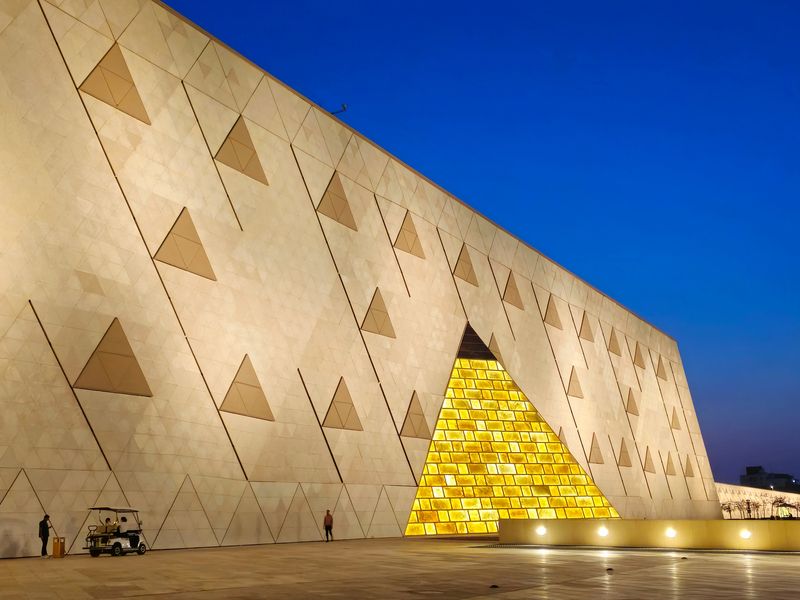Egypt has officially opened the doors to the Grand Egyptian Museum, a breathtaking tribute to one of the world’s most fascinating civilizations. Located near the iconic Giza Pyramids, this colossal museum brings together thousands of artifacts, including the complete collection of Tutankhamun’s treasures displayed together for the very first time. With cutting-edge technology, stunning architecture, and a mission to preserve history for future generations, the GEM is set to become a global cultural landmark that will inspire millions of visitors from around the world.
Grand Opening and Museum Scale
Standing proudly near the legendary Giza Pyramids, the Grand Egyptian Museum has finally opened its doors after decades of planning and construction. Covering an enormous 470,000 square meters, this architectural wonder is one of the largest museums in the world dedicated to a single civilization. Construction kicked off in 2005, though the dream was born back in 1992.
Regional conflicts and the global pandemic caused numerous delays, but perseverance paid off. Now, visitors can explore state-of-the-art facilities showcasing Egypt’s rich history spanning thousands of years. The museum serves multiple purposes: a window into ancient times, a beacon for tourism, and a powerful symbol of national pride and cultural identity for Egypt.
Tutankhamun’s Complete Treasure Collection
For the first time ever, every single artifact from Tutankhamun’s tomb is displayed under one roof. This legendary boy king’s treasures have captivated imaginations worldwide since their discovery, and now visitors can witness the entire collection in all its golden glory. The exhibit includes the iconic golden death mask, ornate jewelry, ceremonial chariots, and thousands of other precious items.
Each piece tells a story about life, death, and beliefs in ancient Egypt. Museum designers created immersive galleries that transport you back over 3,000 years, letting you experience the splendor of pharaonic royalty. The collection represents not just incredible wealth, but also the artistic genius and spiritual depth of an extraordinary civilization.
Monumental Statues and Ancient Masterpieces
Walking into the museum’s vast atrium feels like stepping into another world. An 83-ton statue of Ramesses II—standing 11 meters tall—greets visitors beneath a stunning translucent alabaster roof that bathes the space in natural light. This incredible monument sets the tone for the treasures within.
Another highlight is the 4,500-year-old solar boat of Khufu, a full-sized ancient vessel that once carried a pharaoh on his journey to the afterlife. These aren’t just museum pieces; they’re windows into the beliefs and engineering marvels of ancient Egypt. The exhibits span from pre-dynastic times through the Roman era, organized into thematic galleries covering society, royalty, and beliefs.
Tourism Revival and Cultural Impact
Egypt is betting big on the Grand Egyptian Museum to revitalize its tourism industry and boost its global reputation. Officials expect millions of visitors annually, which could transform the country’s economy and international image. After years of regional instability, this museum represents hope and renewal.
For heritage experts worldwide, GEM demonstrates Egypt’s commitment to preserving its own antiquities at world-class standards. Rather than relying on foreign museums to protect its treasures, Egypt now showcases its ability to be the ultimate guardian of its own history. The museum functions as a tourist destination, a cultural ambassador, and a declaration of national heritage stewardship all rolled into one magnificent package.
Green Building and Sustainability Leadership
Here’s something truly special: the Grand Egyptian Museum isn’t just about the past—it’s pioneering the future. GEM earned the EDGE Advance certification from the International Finance Corporation, making it the first museum in Africa and the Middle East to achieve this prestigious green building recognition. That’s a massive accomplishment!
Advanced climate-control systems protect delicate artifacts like ancient textiles, wood, and gold from environmental damage while drastically reducing energy consumption. The museum has even been officially accredited for tracking its greenhouse-gas emissions. By blending cutting-edge sustainability with ancient heritage preservation, GEM proves that protecting history and protecting our planet can go hand in hand beautifully.
Innovative Architecture and Design Vision
Irish firm Heneghan Peng Architects created something extraordinary when they designed the Grand Egyptian Museum. The building’s unique triangular façade deliberately aligns with the Pyramids of Khufu and Menkaure, creating a visual conversation between ancient and modern. Positioned just over a kilometer from the pyramids themselves, visitors enjoy stunning views of these wonders right through the museum windows.
The massive translucent alabaster roof floods the interior with soft, natural light that feels almost mystical. Every architectural choice was intentional, from the placement of exhibits to the flow of visitor traffic. The design transforms what could have been a simple display space into an unforgettable journey through time.
Immersive Visitor Experience and Interactive Features
Museums don’t have to be boring, and GEM proves it spectacularly. Galleries are organized into three fascinating themes—Society, Royalty, and Beliefs—spread across twelve permanent halls that guide you chronologically through Egyptian civilization. Interactive elements bring history to life in ways textbooks never could.
A dedicated children’s museum wing ensures young visitors stay engaged and curious. Retail spaces offer unique souvenirs, while restaurants provide places to rest and reflect on everything you’ve seen. Perhaps most magical is the constant presence of the pyramids visible through windows, reminding you that you’re standing at the crossroads of past and present. This isn’t just about looking at old objects; it’s about experiencing an entire civilization.











